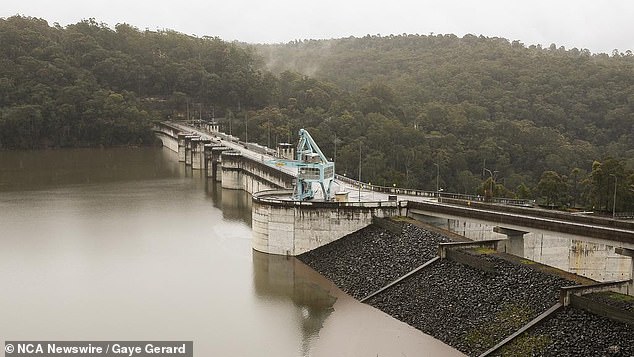A chemical risk expert has issued a scathing assessment of current guidelines for drinking water quality in Australia.
Dr Mariann Lloyd-Smith, senior policy adviser at the International Contaminants Elimination Network, said Australia was falling behind other countries when it came to drinking water safety.
The amount of perfluoroalkyl and polyfluoroalkyl substances (PFAS) allowed in drinking water is subject to new limits in the United States, where laws are much more restrictive than those in Australia.
“Australia cannot continue to use drinking water guidelines that are an international embarrassment,” Dr Lloyd-Smith told the ABC. National Radio.
PFAS are also known as “forever chemicals” and in 2023 the World Health Organization declared PFOA, which is one of approximately 14,000 known PFAS variants, to be a class one human carcinogen.
“Australian standards… are outdated, outdated and do nothing to protect human health,” Dr Lloyd-Smith said.
“We really need to take urgent action against these chemicals, especially when they are present in drinking water, which everyone must consume. It is totally unacceptable.”
In Australia, PFAS chemicals have been widely used in firefighting foam at Defence Force bases due to their resistance to heat and flames.
A chemical risk expert has issued a scathing assessment of current guidelines for drinking water quality in Australia (file image)
The chemicals, developed in the 1940s and 1950s, are also known for their water and stain resistance and are used in products such as raincoats and nonstick pans.
Nick Chartres, from the University of Sydney’s Faculty of Medicine and Health, said they are “the most mobile, persistent and toxic chemicals in the world”.
“We know they can reach the Arctic ice caps, the Antarctic ice caps, and the sediments on the sea floor. Basically, they travel everywhere,” Chartres said.
The presence of PFAS in drinking water has led to new regulations in the United States.
Most Australians probably already have very low levels of PFAS in their bodies due to the use of products such as sunscreen and cosmetics.
But prolonged exposure, which can occur from drinking contaminated water over a long period, can lead to immune and heart problems, and can also affect fetal and infant growth.
Dr. Chartres said the U.S. Environmental Protection Agency found that “based on the best available evidence that we have … there really is no safe level (of exposure to PFAS).”
“So if you’re exposed throughout your life, at any level, your risk of getting these diseases starts to gradually increase based on the level of exposure.”
He said the change in US law should be a wake-up call for Australia.
“Now we have to look at that and say, how do our standards compare? … And if there is some kind of divergence from Australian laws, why is there a divergence?”
In the United States, the maximum allowed level of PFOA and another variant, PFOS, in drinking water is four parts per billion.
But in Australia, PFOS and PFHxS (another variant of PFAS) are permitted up to a level of 70 parts per billion.
“And for PFOA, which is much more toxic, we’ve set a level of 560 (parts per billion),” Dr. Lloyd-Smith said.
However, he warned against buying bottled water to use instead of tap water.
“We have also found PFAS in bottled water, so that is not the solution,” he explained.
Filtration systems can reduce PFAS levels in drinking water, but they are expensive and unaffordable for many people.

Dr Mariann Lloyd-Smith, senior policy adviser at the International Pollutants Elimination Network, said Australia was falling behind other countries on drinking water safety (pictured is Warragamba Dam in New South Wales).
Dr Lloyd-Smith said people should try to reduce their exposure to PFAS beyond their presence in drinking water.
She advised people to check labels and read the ingredients of the makeup products they use.
People should also research how their clothes, food and packaging are made, and what chemicals they might contain.
“Australia should… assess (PFAS) as a class and seek to restrict and eliminate all uses of PFAS,” Dr Lloyd-Smith said.

